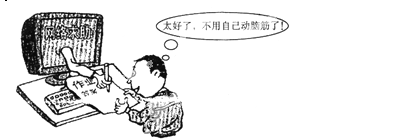��Ŀ����
����Ŀ���ٶ�Ӣ�������ʦҪ��ͬ��֮�佻�������ģ���������ͬ��д���������ġ����й���10�����Դ���ÿ���������������ÿ��������漰һ�����ʵ����ӡ�ɾ�����ġ�
���ӣ���ȱ�ʴ���һ��©�ַ��ţ��ģ�������������д���üӵĴʡ�
ɾ�����Ѷ���Ĵ���б�ߣ��ܣ�������
�ģ��ڴ��Ĵ��»�һ���ߣ����ڸô�����д���ĺ�Ĵʡ�
ע�⣺1.ÿ���������ľ���һ��;
2.ֻ������10�������ߣ��ӵ�11���𣩲��Ʒ֡�
One day, in my way to school, I noticed two anxious foreigners was surrounded by a group of people. I stopped and found that they were tourist from Canada who carelessly left a very importantly wallet in a taxi. So I take them to the nearest police station. With help of the policemen, we got in touch the taxi company. We were telling that the wallet had just been found. And two passports, flight tickets, or some money were still inside it. Finally the two Canadians got our wallet back. They thanked for me and left.
���𰸡�
��������1.�����ʡ����⣺һ�죬����ȥѧУ��·�ϣ���ע��������ŵ�����˱�һȺ��Χ�š�on one��s way to��ij��ȥ��·������in��on��
2.������νһ�¡����⣺һ�죬����ȥѧУ��·�ϣ���ע��������ŵ�����˱�һȺ��Χ�š��˾�������two anxious foreigners��ϵ������were����was---were��
3.�������ʸ�������������ͣ�������������������Լ��ô���ο͡������ᵽ��������ˣ���tourist��tourists��
4.�������ݴʡ�����˵������������˲�С�İ�һ����Ҫ��Ǯ������һ���������������ݴ���������wallet����importantly��important��
5.����ʱ̬�����⣺����Ҵ�����ȥ������ľ���֡���������������ȥ�����飬Ҫ��һ���ȥʱ����take��took��
6.����ڴʡ����⣺�ھ���İ����£�������ϵ���˳����˾��with the help of��~~�İ�����������with��vhelp֮�����the��
7.�����ȥ�ִʡ����⣺���Ǹ������Ǹո��ҵ���Ǯ�������ݾ����֪����we�ȶ���tell֮���DZ�����ϵ����telling��told��
8.�������ʡ����⣺���Ż������ɻ�Ʊ�Լ�һЩǮ��Ȼ��Ǯ������ݾ����֪two passports, flight tickets,��some money�Dz��й�ϵ����or��and��
9.���⣺������������ô����û������ǵ�Ǯ�������ݾ����֪our��their��
10.���鶯�ʡ����⣺���Ǹ�л���ң�Ȼ���뿪�ˡ�thank sb��лij������ɾȥfor��

 �Ķ��쳵ϵ�д�
�Ķ��쳵ϵ�д�


